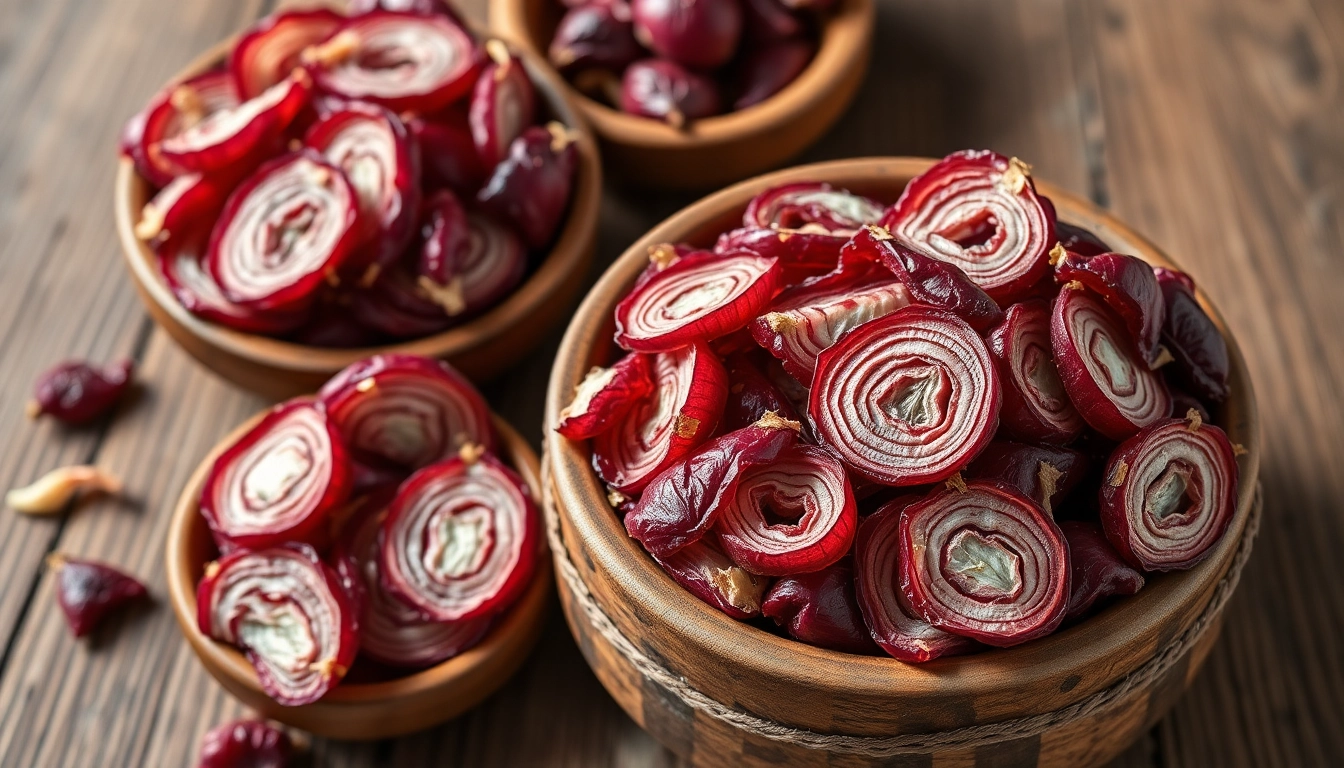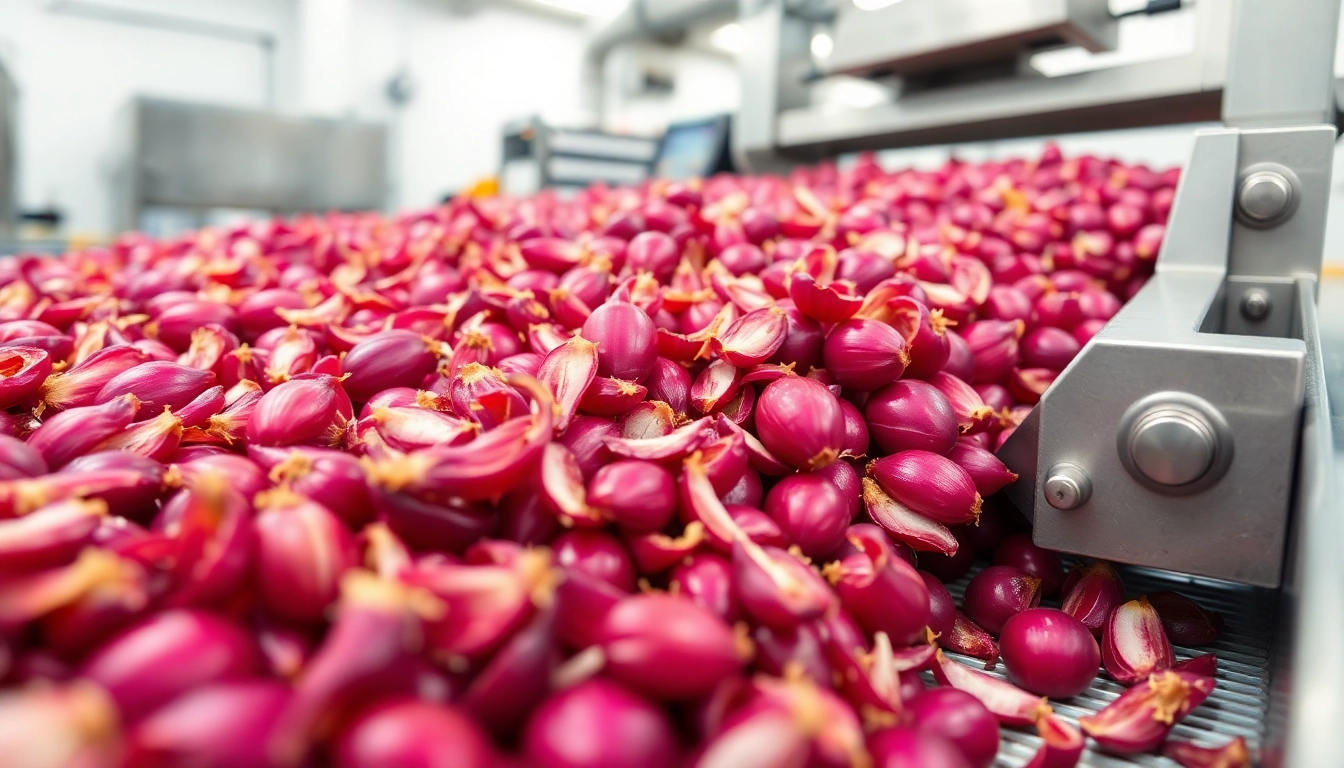An In-Depth Overview of Dehydrated Red Onion in the Food Industry
The food industry continually seeks high-quality ingredients that enhance flavor, extend shelf life, and offer convenience for manufacturers and consumers alike. Among these, Dehydrated Red Onion stands out as a vital ingredient, appreciated for its rich flavor, vibrant color, and versatility in various culinary applications. As a trusted manufacturer and exporter of authentic and certified food products, Spice Nest has established itself at the forefront of dehydrated onion production, offering premium quality products tailored to meet international standards.
This comprehensive guide delves into everything you need to know about dehydrated red onion—from its manufacturing process and applications to sourcing tips and market trends—equipping food industry professionals with practical insights to incorporate dehydrated red onion effectively into their offerings.
Understanding Dehydrated Red Onion and Its Applications
What Is Dehydrated Red Onion?
Dehydrated red onion is processed onion whereby moisture is carefully removed, resulting in a concentrated form that retains the onion’s natural flavor, color, and nutritional content. Unlike fresh onions, dehydrated varieties boast a longer shelf life, ease of storage, and convenience in handling. It comes in various forms such as flakes, powders, or granules, depending on the processing method and intended usage.
The dehydration process preserves essential oils and flavor compounds, making it an ideal ingredient for seasoning, flavoring agents, and ingredient blends across diverse food categories.
Common Uses in Culinary and Food Manufacturing
Dehydrated red onion finds extensive application in both culinary settings and large-scale food manufacturing. Its uses include:
- Seasoning and flavor enhancers: Incorporated into spice blends, soups, sauces, and snack foods to enhance umami and aromatic qualities.
- Ready-to-eat products: Used in instant noodles, ready-mix products, and dehydrated soup powders.
- Bakery and snack items: Adds depth of flavor in savory biscuits, crackers, and trail mixes.
- Meat and vegetarian products: Utilized in marinations, stuffing, and veggie patties for flavor infusion.
- Vegetable powders and gravies: Key ingredient in dehydrated gravies, sauces, and gravy bases to impart authentic taste and color.
Its portability and ease of use make dehydrated red onion extremely valuable in food service, catering, and processed foods industries.
Health Benefits and Nutritional Value
Beyond culinary uses, dehydrated red onion offers notable health benefits. It is rich in antioxidants like quercetin and flavonoids, which combat oxidative stress and support immune health. It contains dietary fiber aiding digestion, and sulfur compounds known for their anti-inflammatory and antimicrobial properties.
Despite being in a dehydrated form, much of the nutritional value remains preserved, making it a healthful addition to various diets. Moreover, its low fat and calorie content make it suitable for health-conscious consumers.
Guidelines for Selecting a Quality Dehydrated Red Onion Supplier
Quality Certifications and Standards
Reliable sourcing begins with verifying supplier certifications such as ISO 22000, HACCP, Organic certifications, and other global quality standards. These attest to stringent manufacturing practices, food safety, and hygiene protocols. Participants in major food exhibitions, like Spice Nest’s presence at Biofach 2024, reflect their commitment to quality and international compliance, thereby assuring buyers of superior products.
Product Freshness and Packaging Options
Ensuring freshness during storage and transit is vital. Leading suppliers employ vacuum packing, nitrogen flushing, or airtight containers to preserve aroma, prevent moisture ingress, and prolong shelf life. Packaging options often include sealed bulk pouches, resealable bags, and retail-ready containers, tailored to client requirements and logistics.
Pricing and Supply Chain Reliability
Competitive pricing should be balanced with consistent quality and reliable supply chains. Top manufacturers maintain transparent pricing strategies, flexible order quantities, and robust logistics networks, minimizing delays and stock shortages. Establishing long-term relationships with verified exporters like Spice Nest ensures continuity, reliability, and cost-efficiency.
The Manufacturing Process of Dehydrated Red Onion
Harvesting and Selection of Raw Onions
The process begins with selecting mature, healthy red onions free from pests and disease. Harvesting is timed precisely to optimize sugar content and flavor development. Freshly harvested onions are sorted and graded to ensure only premium quality material proceeds to dehydration.
Dehydration Techniques and Equipment
Several dehydration methods are employed, including drum drying, spray drying, vacuum drying, and freeze drying. In large-scale production, tunnel or fluidized bed dryers are common. These methods allow precise control over temperature and humidity, maintaining the onion’s color, flavor, and nutritional integrity while minimizing nutrient loss.
Quality Control and Storage Practices
Post-dehydration, the product undergoes rigorous quality checks for moisture content, microbial safety, and flavor consistency. Advanced packaging safeguards against moisture reabsorption, pests, and contamination. Proper storage conditions—cool, dry, pest-free environments—are essential to preserve quality until the product reaches end-users.
Effective Integration of Dehydrated Red Onion in Food Products
Recipe Development with Dehydrated Red Onion
Incorporating dehydrated red onion into recipes requires understanding its rehydration properties and flavor profile. It can be added directly in dry form or rehydrated with water or broth for specific applications. Chefs and product developers often use it in spice blends, soups, sauces, and snack mixes to impart authentic taste.
Dosage and Handling Precautions
The recommended usage level varies based on product type—typically 1-5% of total formulation. Proper handling includes avoiding moisture exposure to prevent clumping and spoilage. For sensitive applications, starting with small batches and conducting sensory tests ensures optimal flavor and texture.
Enhancing Shelf Life and Flavor Profiles
Dehydration inherently extends shelf life, but additional preservation techniques like oxygen barriers, antioxidants, and proper packaging further enhance longevity. Regular quality audits and storage conditions are critical for maintaining flavor integrity over time.
Market Trends and Future Opportunities in Dehydrated Onions
Growing Demand in International Markets
The global dehydrated onion market is experiencing rapid growth driven by increasing demand for processed foods, convenience products, and the rising popularity of ethnic cuisines. Countries like the USA, UK, Middle Eastern nations, and Southeast Asia are key markets expanding their consumption of dehydrated onion.
Innovative Packaging and Branding Strategies
Brand differentiation through eco-friendly packaging, attractive labeling, and traceability initiatives enhances consumer trust. Innovative pack sizes—small retail packs and large bulk containers—cater to diverse customer segments.
Environmental Sustainability in Production
Sustainable practices, including responsible sourcing of raw materials, energy-efficient dehydration methods, and waste management, are increasingly critical. Companies that adopt eco-conscious processes not only reduce their ecological footprint but also appeal to environmentally aware consumers.


